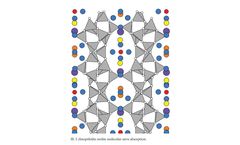Composting Optimization Articles & Analysis: Older
14 articles found
General statement: KMI Zeolites are 97+% pure crystalline, hydrated aluminosilicates of alkali and alkaline earth cations which possess three-dimensional crystal structures. They have the ability to lose and gain water reversibly, to adsorb molecules of appropriate cross-sectional diameter and to exchange their constituent cations (NH4+, Na+, K+, Ca2+) without major change in their structure. ...
Although compost has the advantages of rich nutrient content and loose soil, it also has the disadvantages of low effective content and slow fertilizer effect. How to improve the compost efficiency? It has been proved that proper mixing of fertilizer in compost can not only effectively prevent the volatilization of fertilizer effect, but also make the fertilizer effect multiply. Compost is ...
Composting of waste plant materials and its use in agriculture and landscape sites is an environmental friendly way of reducing waste material and conserving the environment. In this perspectives a survey has been performed at the Dubai based International Center for Biosaline Agriculture to compost the plants based waste material (lawn cuttings-grass) to compost. The material was inoculated with ...
Accumulation of dairy manure compost has created a need to identify alternative uses for this plant nutrient source. This field study determined compost effects on corn (Zea mays L.) silage production, nutritive value, and soil characteristics for three growing seasons following incorporation of dairy manure compost at 0, 35, 70, and 105 Mg dry matter (DM) ha–1. Yields from subplots receiving ...
Conventional agriculture can lead to reduced soil organic matter and depletion in soil fertility. For that reason, Food and Agriculture Organization of the United Nations (FAO) recommends organic matter incorporation to soils to increase their agronomic quality. This work studies the effect of the transition to organic farming on chemical and biochemical properties of a loam soil (Xerofluvent), ...
ReMaDe Kent and Medway is managing a series of WRAP (the Waste & Resources Action Programme) funded trials on top fruit and other horticultural crops in Kent, the ‘Garden of England’, in order to develop the market for compost as a soil improver, and in this trial, as a mulch for young fruit trees. Twelve farms are taking part in the trials growing a wide range of crops, including ...
ABSTRACT Quality standards have been recently established in France for sewage sludge composts and other urban composts (greenwaste, biowaste and municipal solid waste composts). These standards allow to guarantee the innocuousness of the composts. Other standards have been defined in order to predict the compost effects on soil properties: the index of biological stability (ISB), based on ...
Oxygen Uptake of Soil and Compost Samples The Challenge AER-200 aerobic/anaerobic respirometer is ideally suited to determine in-situ rates of oxygen uptake in soil or compost samples – as may occur in the upper layers of soil under natural atmospheric conditions or in mixed compost reactors. This objective is accomplished by using a double-column reactor configuration as illustrated in Figure ...
Waste management in Chile Until a few years ago there had been a lack in the supply of basic infrastructure needs like the supply of drinking water, sewage systems, electricity and communication in a lot of rural areas in Chile. With the advancing economic development further necessities have arisen. New objectives are the extended development of infrastructure, the conservation of natural ...
More than 3 Mio. Mg of compost were produced in Germany in 1998 (Wiemer and Kern 1998). Kitchen and garden waste from households as well as waste from landscaping and parks were used as substrates to a high extent. The composts were mainly used in landscaping, recultivation, horticulture, substrate production and in agriculture. Applied on cultivable land compost can improve the soil structure ...
Composting is a robust and cheap biological treatment method useful for all solid biodegradable waste. The performance of composting can vary substantially depending on managing conditions such as oxygen supply and compost temperature. Oxygen and temperature affects the rate of degradation and may also influence emission of NH3 and N2O. The gaseous N losses during composting from organic ...
Traditionally the use of soil improvers in agriculture is aimed at the restoration of the organic substance removed from the agro-ecosystem by crops. The addition of humus, as replacement for the portion gradually mineralised by the micro-organisms of the soil, leads to the conservation of its fertility under many point of view: physical (e.g. porosity, drainage, aeration), chemical (availability ...
The Empresa de Servicios Municipales de Limpieza de Lima (ESMLL and the Pan American Center for Sanitary Engineering and Environmental Sciences (CEPIS) carried out in 1993 a joint research project oriented toward the recovery and use of market waste for compost production to benefit from the wastes generated in Lima.. This pilot project represents an effort aimed at solving the ...
Above that, our procedure is able to monitor and control the composting process precisely. The result is considerable reduction of composting times. With this method you can produce hygienic, top-quality compost. Such compost is much easier to market (e.g. in agriculture or horticulture). Concept The OTTO-procedure for ...






